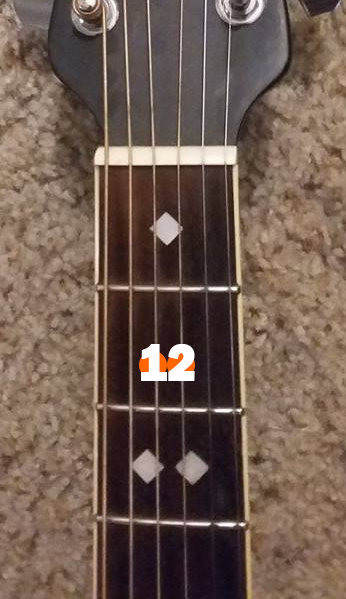VETERAN III
Level 10
MAJOR SCALE
"MAJOR" = pattern of spaces between notes
E
"SCALE" = series of notes

F
F#
G
G#
A
A#
B
C
C#
D
D#
E
x
x
x
x
x
Instead of playing all of the notes, you skip particular ones to create gaps, or "intervals".
Starting with the open E string, try playing the pattern above. Notice how it "resolves" and sounds complete to the ear when you reach the second E.
MAJOR SCALE



W
H
hole step:
alf step:
To build a major scale, you need two types of intervals:
G MAJOR SCALE
This is a "G major scale" because the root note (also called the "tonic") is a G.
MAJOR SCALE

Try playing through this pattern, starting with the first #1 note on the low E string.
e---------|--------|---------|--------|
B---------|--------|---------|--------|
G---------|--------|---------|--------|
D---------|--------|---------|--------|
A-----4---|----4---|-4-5-7---|4-5-7---|
E-5-7---5-|5-7---5-|---------|--------|
e-----------------|-----------------|
B-----------------|-----------------|
G-----------------|-----------------|
D---4-------------|---4-------------|
A-7---7-5-4-------|-7---7-5-4-------|
E-------------5---|-------------5---|
e---------|--------|
B---------|--------|
G---------|--------|
D---------|--------|
A---------|--------|
E-5-0-5---|5-0-5---|
Are You Sleeping?
(or “Where is Thumpkin?”)
Use the major scale to navigate through the tab. Think of each note as a “rung” of a ladder, going up and down the pattern.
MAJOR CHORD CONSTRUCT
your major chords are built from this scale

x
x
x
x
x
#1
#3
#5

E
B
E
G#
B
E
SUSPENDED CHORDS
to create an interesting "suspended" chord, move the 3rd note in a chord to the 2nd or 4th position

x
x
x
x
x
#1
#3
#5
suspended chords create SUSPENSE or TENSION, and they want to "resolve" back to their original form

SUSPENDED CHORDS




Asus4
Asus2
On the B string,
The C# is moved UP to a D.
On the B string,
The C# is moved DOWN to a B.